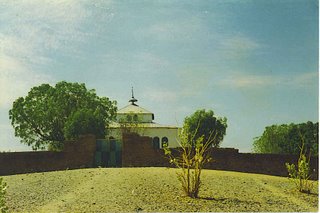The city of Humera and the Wolqait-Tegede region in general have been home to many Ethiopians who come from across all the country. During these times, people respected and appreciated the identity and the culture of the native people. However, today, the minority dictatorship from Tigary annexed these region and instead resettled hundreds of thousands of Tigrayan ethnic people by evicting hundreds of thousand native residents. Moreover, its ethnic based system of divide and rule has blockaded other Ethiopians from coming in to these areas and live as they once did.
Not only these, the large influx of Tigrayans (estimated up to 500,000) in the cover of resettlement and that was conducted without any consideration or will of the native residents has caused a adverse demographic, cultural, socio-political, and psychological changes. Approximately it is estimated that the total population of the local inhabitants is between 200,000 and 300,000 excluding those who have been forced flee for their lives and currently residing in Gondar, Armachiho, Abderafe, and the remaining who have migrated to other countries.
I will come back to that in other postings. Here are a couple of photos that I found to be really interesting.......
The first picture dates back to 1962 Ethiopian Calendar during the imperial period. I don't have much recollection of the place but I thought it might bring some old memories of some people. Even though the picture is badly damaged, one could see little huts and building scattered here and there.
 Photo 1: Aerial view of city Setit Humera, Ethiopia in 1962 (Click on the pictures for a magnified view).
Photo 1: Aerial view of city Setit Humera, Ethiopia in 1962 (Click on the pictures for a magnified view).The second picture is in a much better condition and it was photographed in 1992 Ethiopian Calendar. This picture shows the newly renovated St. Marry's Church in Setit Humera. Much of the funding for the renovation was obtained (donated) from the Diaspora Wolqait-Tegede Ethiopians.
Looking at these photo I can almost feel the HOT weather of the city during the day and imagine people sitting under the shades of the large trees. If I am not mistaken the trees on this picure are locally known as "Nim" or "Mim." It is believed that sometimes the temperature could reach more than 45 degree celicius. Luckily, with the help of the trees and the breath coming from the nearby Tekeze river the city cools down a little bit.
Qegnim nefese gira, Ende Hager yemiYakil Yelem!! (East - West, Home is the Best) bilo yelem nechu sewuye.
 Photo 2: St. Marry's Church, Setit Humera, Ethiopia in 1992 E.C. (Click on the pictures for a magnified view).
Photo 2: St. Marry's Church, Setit Humera, Ethiopia in 1992 E.C. (Click on the pictures for a magnified view).
No comments:
Post a Comment